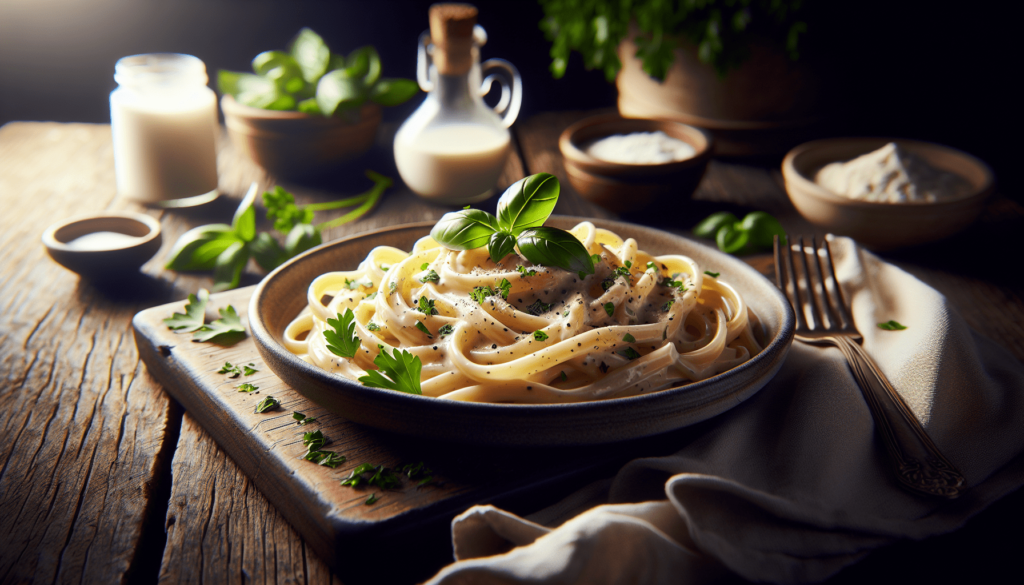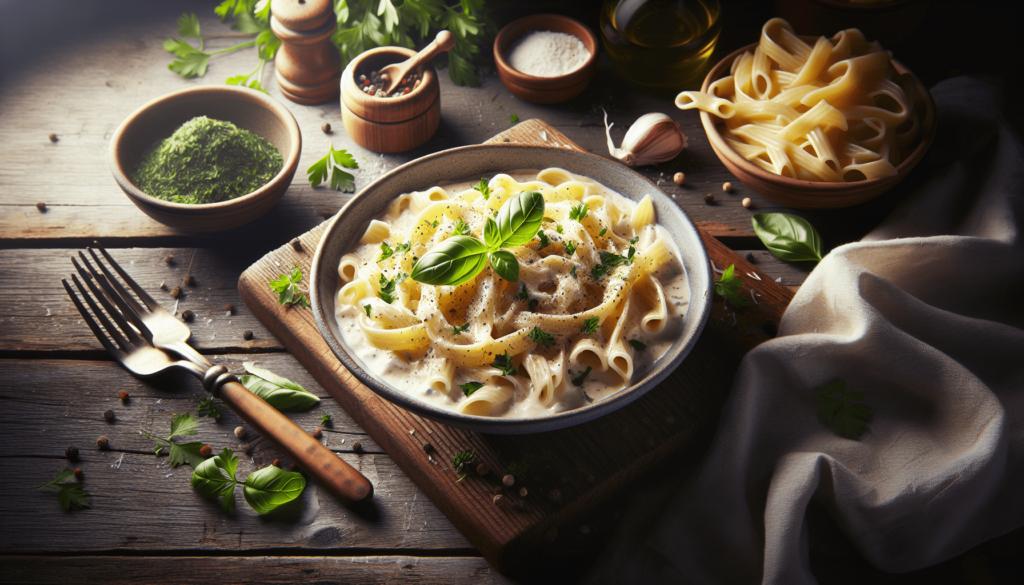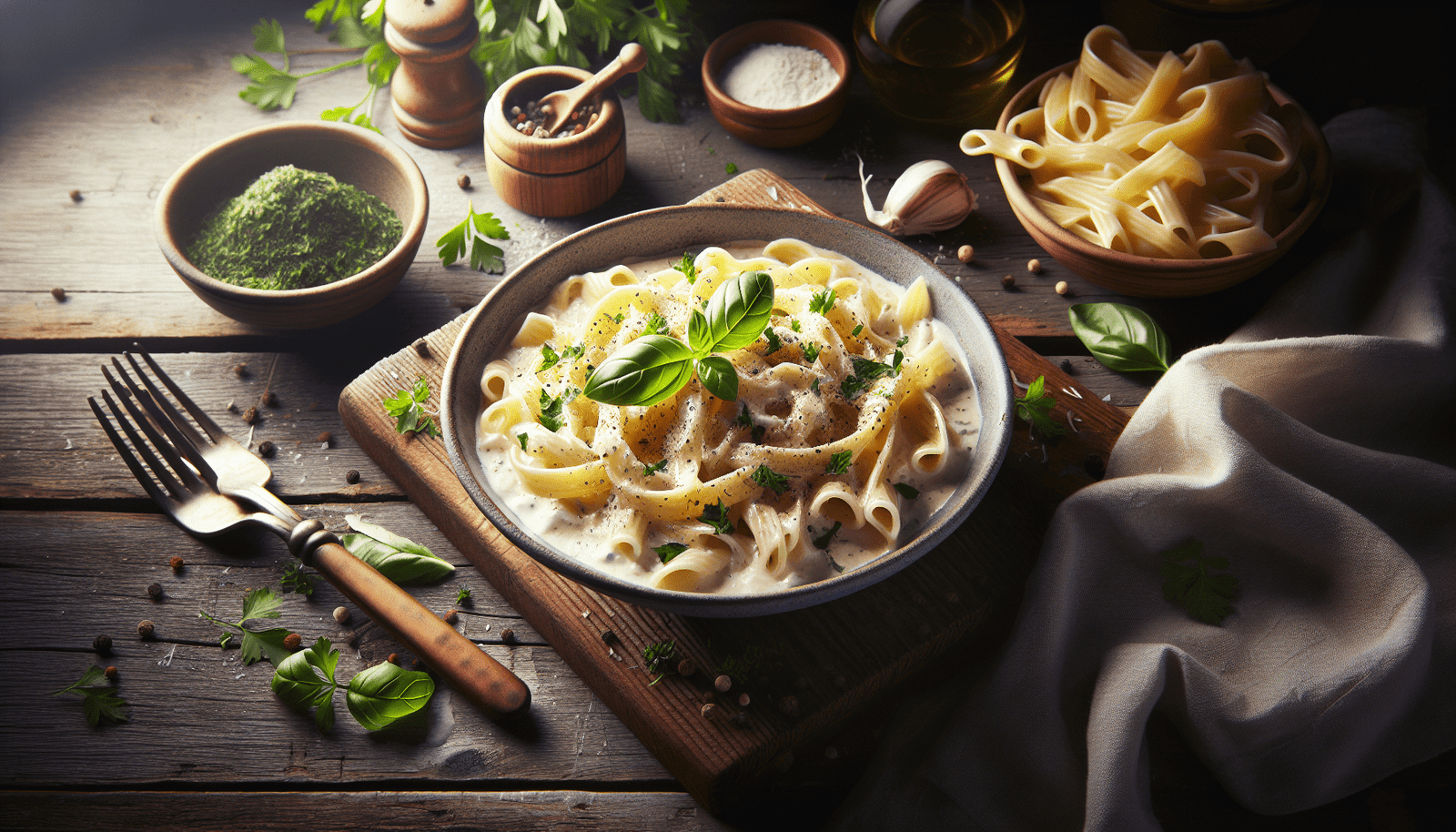Have you ever wondered how to make that creamy, delightful dish known as white sauce pasta? It’s one of those meals that can transform a simple dinner into a memorable culinary experience. Whether you’re a seasoned home cook or a beginner looking to impress your family, this guide is here to help you master the art of creating the perfect white sauce pasta.

What is White Sauce Pasta?
White sauce pasta is a classic Italian dish that has been embraced in kitchens around the world. It features a creamy, smooth, and flavorful sauce, often combined with al dente pasta, creating a rich and satisfying meal. The sauce, also known as béchamel, forms the foundation of many classic dishes and is made with a few simple ingredients: butter, flour, and milk. Despite its simplicity, mastering the sauce is key to elevating your pasta dish to restaurant-quality perfection.
The Origin of White Sauce
Béchamel sauce, which is the official name for white sauce, traces its origins back to France. It was named after Louis de Béchamel, a chef at the court of King Louis XIV in the 17th century. Over time, the sauce became a staple in Italian cooking, often used as a base for lasagna, mac ‘n’ cheese, and our featured dish, white sauce pasta.
Essential Ingredients for White Sauce Pasta
Before you get started, it’s important to gather all the necessary ingredients. Having your ingredients prepped and ready to go will make the cooking process much smoother.
Ingredients List
| Ingredient | Quantity |
|---|---|
| Pasta | 250 grams |
| Butter | 2 tablespoons |
| All-purpose Flour | 2 tablespoons |
| Milk | 2 cups |
| Salt | To taste |
| Pepper | To taste |
| Garlic (minced) | 2 cloves |
| Olive Oil | 1 tablespoon |
| Mixed Vegetables* | 1 cup |
| Parmesan Cheese | ½ cup |
| Oregano | To taste |
| Basil | To taste |
*Mixed Vegetables can include bell peppers, broccoli, corn, carrots, or any of your favorites.
Understanding the Ingredients
- Pasta: Choose any kind of pasta you like. Common choices include penne, fettuccine, or spaghetti. The pasta acts as the canvas for the delicious white sauce.
- Butter and Flour: These are used to make the roux, which is essential for thickening the sauce. The flour helps give the sauce its velvety texture.
- Milk: The base liquid that combines with the roux to form the béchamel sauce. Full-fat milk works best for a rich sauce, but you can use lower fat options if you prefer.
- Garlic and Olive Oil: These enhance the flavor of the sauce and add an aromatic depth to the dish.
- Salt and Pepper, Oregano, and Basil: These add the essential seasoning that brings out the flavors in both the sauce and the pasta.
- Parmesan Cheese: Optional but recommended for adding creaminess and a savory depth of flavor.
- Mixed Vegetables: They add color, texture, and nutrition to the dish, turning your pasta into a wholesome meal.
Cooking Steps for Making White Sauce Pasta
Now that your ingredients are ready, let’s walk through the step-by-step process to create this dish. Remember, cooking is an art, so feel free to adjust the seasonings and ingredients to suit your palate.
Step 1: Cook the Pasta
- Boil Water: In a large pot, add water and a pinch of salt. Bring it to a rolling boil.
- Add the Pasta: Once the water is boiling, add the pasta. Stir occasionally to prevent it from sticking together.
- Cook Until Al Dente: This means the pasta should be cooked through but still have a firm bite. Follow the pasta package instructions for timing; typically, it’s around 8-12 minutes.
- Drain and Set Aside: Once done, drain the pasta using a colander and set it aside. Reserve a small cup of pasta water in case you need to adjust the sauce’s consistency later.
Step 2: Prepare the White Sauce
- Melt Butter: In a saucepan, melt the butter over medium heat.
- Add Flour: Quickly add the flour and whisk continuously to form a roux. Cook this mixture for about 2-3 minutes, until it takes on a light golden color but not browned.
- Pour in Milk: Gradually add the milk while continuing to whisk. This will help prevent lumps.
- Bring to a Simmer: Continue to whisk the mixture until it thickens, usually about 5-7 minutes. You’re aiming for a smooth sauce that coats the back of a spoon.
- Season the Sauce: Add salt, pepper, oregano, and basil according to your taste. If you’re using Parmesan cheese, stir it in at this stage for a richer sauce.
Step 3: Sauté the Vegetables
- Heat Olive Oil: In a separate pan, heat the olive oil over medium-high heat.
- Add Garlic: Sauté the minced garlic until fragrant, about 1 minute.
- Cook Vegetables: Add your choice of mixed vegetables and sauté until they’re tender yet slightly crisp. This takes about 5-7 minutes.
Step 4: Combine and Finish
- Mix Pasta and Vegetables: Add the cooked pasta and sautéed vegetables to the saucepan with the white sauce. Toss everything together until well coated.
- Adjust Consistency: If the sauce is too thick, add a bit of the reserved pasta water to reach your desired consistency.
- Final Seasoning: Taste and adjust the seasoning with additional salt, pepper, or herbs as needed.
- Serve Hot: Transfer the pasta to serving dishes, garnish with extra Parmesan cheese and fresh basil if desired, and serve immediately.
Tips and Variations
While following the recipe gives you a reliable guide, here are some tips and variation options to truly make this dish your own:
Tips for Perfect White Sauce Pasta
- Consistent Stirring: Continually whisk the sauce to avoid lumps and ensure a smooth texture.
- Use Fresh Herbs: Fresh herbs can elevate the flavor profile compared to dried herbs.
- Customize Vegetables: Feel free to use any vegetables you like or have on hand. They can be fresh, frozen, or even leftover roasted vegetables.
Delicious Variations
- Chicken or Shrimp Additions: Sauté chicken or shrimp and add them to the pasta for a heartier meal.
- Spice it Up: For a little kick, sprinkle in red pepper flakes or a dash of cayenne pepper.
- Cheesy Indulgence: Try adding a mix of cheeses like cheddar, mozzarella, or gouda for a richer taste.

Nutritional Information
While white sauce pasta might not always be the lightest choice, it’s important to understand its nutritional value, especially if you’re watching your diet.
Approximate Nutritional Breakdown (Per Serving)
| Nutrient | Amount |
|---|---|
| Calories | 400 |
| Protein | 12 grams |
| Carbohydrates | 50 grams |
| Fat | 18 grams |
| Fiber | 4 grams |
| Calcium | 20% of RDA |
These values can vary based on the choice of pasta, milk, and additional ingredients used. Adjust the portion sizes and ingredient quantities as needed to suit your dietary requirements.
Troubleshooting Common Issues
When cooking, things don’t always go to plan. Here’s how to address some common issues that might arise while preparing white sauce pasta:
Sauce is Too Thick or Lumpy
- Solution: Gradually add more milk or reserved pasta water while continuously stirring until you reach the desired consistency. If the sauce is lumpy, whisking vigorously might help break the lumps.
Sauce is Too Bland
- Solution: Don’t be afraid to add more seasoning. Consider increasing the amount of salt, pepper, or herbs for a richer flavor. A squeeze of lemon juice can also revive and brighten the taste.
Pasta is Too Soft
- Solution: Make sure to check the pasta often while boiling to avoid overcooking. Always aim for al dente. If the pasta gets too soft, you can rinse it under cold water to stop the cooking process.
The Joy of Making White Sauce Pasta
Crafting a delicious white sauce pasta is about more than following a recipe; it’s about expressing creativity in your kitchen. From selecting your favorite mix of vegetables to experimenting with different herbs and spices, there are countless ways to make this dish your own.
The next time you have guests over or simply want to treat yourself to a comforting meal, whip up a batch of white sauce pasta. With its creamy texture and savory flavors, it’s sure to become one of your go-to recipes. Enjoy the process, savor the flavors, and share the love of this wonderful dish with those around you. Happy cooking!
Some of the links on this site are affiliate links, which means I may earn a small commission if you click on them and make a purchase, at no additional cost to you. As an Amazon Associate, I earn from qualifying purchases.



